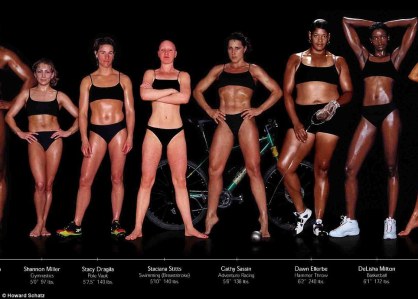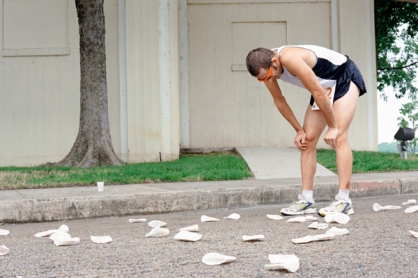I’m too ashamed to look back and confront the last time I posted on this blog. It was too long ago.
I’ve spent the past eight months or so on a hiatus from endurance sport. At times it’s felt liberating (a lot of hours free up every day when you step away from endurance training), at times it’s felt incredibly scary (how will my body react? Am I throwing all of my years of hard work down the drain? [the short answer: no. It’s come mostly back within a few weeks of hard work. Thanks muscle memory!]), and at times it’s felt lonely (without endurance sport, who am I?).
The greatest lesson I’ve learned from stepping away from training for so long is that without it, I am not the same. Sure, I have a heck of a lot more free time and that’s nice, but I’ve never been a lay-around, go-with-the-flow kind of person. I’ve always been a go-getter, a doer, a fidgeter. But as the months slowly passed I’ve found myself almost undetectably slipping into a sort of complacency; a sloth I’ve never known has made its way into my life. Now, I am completely capable of sitting through a regular two-hour movie without a problem. Like the rest of the population, I can contentedly twiddle through mindless games on my iPhone for hours. This may sound normal, but it’s not normal for me. I was meant to move. But I kept at it, because for the first time in my adult life, I learned how to completely relax.
Then, the big questions started popping up. Who am I? What is my purpose? What is my worth? In a life without the endorphins, goal-setting, and the tangible changes that come along with endurance training, everything else that I have to live for seems somewhat cruel and harsh. Without my endurance lifestyle, what do I have? I have my job and school, which are capricious—satisfying some of the time, but a frustrating and stressful disappointment most of the time. I have my friends and family—although perhaps taking a break from endurance sport allowed me to focus on them and appreciate them more. I have my possessions, but the mere idea of possessions depresses me. I have my love for playing music, admittedly rediscovered during my hiatus. But I don’t have that daily surge of energy and positivity that accompanies a long run or vigorous swim—energy and positivity that affects all of the aforementioned items tremendously anyway.
During my break from running, biking, and swimming, I became aware of what it feels like to be a boring person. I hope none of you take offense to this—my apologies in advance if you do, although I’m going to go out on a limb and assume the vast majority of my readership are pretty dedicated athletes. A boring person, in my own, simple little definition, is someone who has nothing that makes him or her interesting. No hobbies, no interests, no areas of expertise, no recreational activities in which they are adept, no talents utilized in areas outside of the traditional work environment, no massive collections of bizarre and random things. I have become “The Endurance Junkie,” “The Marathon Runner,” “The Triathlon Girl,” or even more crudely “The Crazy Person” (which I’m totally okay with!) among my friends. Without endurance sport, I don’t have much of an identity. It’s something I’m interested in, something I’m dedicated to, and something that makes me interesting. I do it for me, but a nice offshoot is that it makes me something unique for my friends and family. And similarly, I have a special place in my heart for friends that have non-boring sides to them. I learn so much from them, and find them to be much more engaging and inspiring people to have in my life.
One thing I’ve noticed, as my friends all approach and enter their 30s, is that the boring life just seems to set in with the vast majority of adults. Slowly, it takes over, but within only a few short years it can have a firm grasp on the typical working mom with toddlers or 60+ hour work week. This is what my friends are becoming, and so, idealistically, I cling to the hope that I can stay true to myself and the things that make me tick.
I took a break from endurance sport for several reasons, but one was to test myself. I remember having a conversation with my best friend a couple of months ago. I told him that when I was completely honest with myself, I did have some concerns about taking exercise too far. I think this is a common experience with endurance athletes. Endurance sports are all about taking things to the limits, and then passing them. We pride ourselves on completing events that require multiple body systems to fail at worst, and go into heavy compensatory modes at best. We voluntarily take on training that can sometimes make us tired and cranky, and even throws our physiology out of whack. Even those of us who are very careful about balancing training with recovery struggle with finding balance. As ultraman Rich Roll once said, “Balance eludes me.”
Looking back upon my many years as a runner, cyclist, and swimmer, I can earnestly say that there are times I’ve found a healthy balance, but more frequently I’ve been out of balance. Embracing imbalance has caused me much joy. But at times, too much imbalance has caused unrelenting fatigue, difficulties keeping up with responsibilities, and social withdrawal. Perhaps the biggest reason for my hiatus was to find time to recalibrate my perspective on things—so that the next time I get back into training, I do so with the benefit of reflection and experience.
A question I asked myself as my activity levels started to dwindle was: will all of my energy and drive somehow be magically sublimated into other aspects of my life? Will taking a break from exercise suddenly cause me to spike in my performance at school and work? After all, that energy is going to still be kicking around, and if it’s not going into a run, it’s got to go somewhere.
Not surprisingly, life without exercise was, paradoxically, an energy suck. I won’t go into detail here because I am sure you all have experienced this, but in summary, without my daily dose of activity I was more tired, emotionally labile, and unmotivated. Interesting how that works.
My take-away from my time off has been multi-fold, but to keep things succinct, I think the biggest thing I learned is that endurance sport gives me something that makes me happy and makes life feel like it’s worth living. This is extraordinarily rare. I think so many people—too many people—wander through adulthood aimlessly, and time chips away at them. They don’t have a “thing,” something they can keep coming back to that helps them along and lifts them up. They don’t have a happy place. They don’t have something that truly engages them and excites them. We runners, cyclists, and swimmers have this. Our “hobbies” are inane and without a clearly direct outcome or contribution to society, but they grant us joy that few experience on a regular basis. The indirect consequences of this cannot be quantified.
During my break, I realized that I wanted my life to feel like it’s worth living. I wanted to feel like life was fun and exciting. With the exception of a few select beings I love with all my heart, triathlon was the only place I could find this. Imagine the ecstatic feeling when one of your favorite songs bursts through your headphones during a run—the surge of previously hidden power that takes over your stride. Picture the tears of happiness and exhaustion that well up in your eyes during a marathon finish. Think about the incredible camaraderie you’ve found among other athletes at triathlons, in cycling clubs, and in masters’ swimming groups. These experiences cannot be paralleled anywhere.
And for that, I’m back in the saddle.




